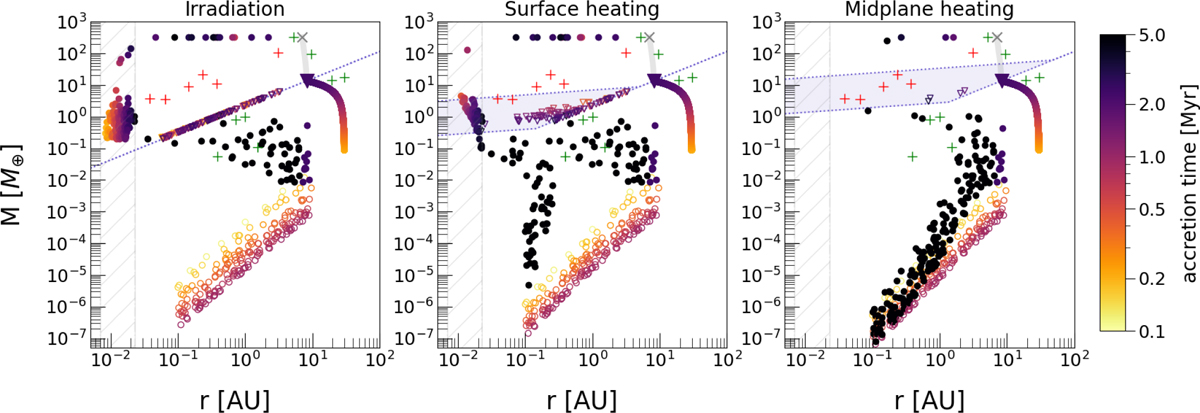Fig. 6

Download original image
Population synthesis of pairs of planets (Jupiter-like planet + one inner embryo) for the three different disc models considered in this study. The empty dots represent the random initial positions and masses of the inner embryos, the triangles mark the position at which the embryos cross isolation mass and the full dots represent the final position and masses of the planets. All markers are colour-coded by accretion time. The position and start time of the Jupiter-like planet is fixed for each simulation at ap,0 = 30 AU and t0 = 2.5 · 105 yr. The filtering due to the Jupiter-like planet is basically irrelevant in the irradiated disc as almost all embryos reach isolation mass leading to a population of super-Earths and some gas giants. In a moderately viscous disc (central panel) growth is partially hindered by the combined effect of delayed growth of inner embryos and pebble filtering, while a strongly viscous heated disc (right panel) results in completely hindered growth in the inner disc and Mars-mass embryos in the outer disc. For reference, the green and black crosses represent the Solar System and the HD 219134 planets respectively.
Current usage metrics show cumulative count of Article Views (full-text article views including HTML views, PDF and ePub downloads, according to the available data) and Abstracts Views on Vision4Press platform.
Data correspond to usage on the plateform after 2015. The current usage metrics is available 48-96 hours after online publication and is updated daily on week days.
Initial download of the metrics may take a while.


